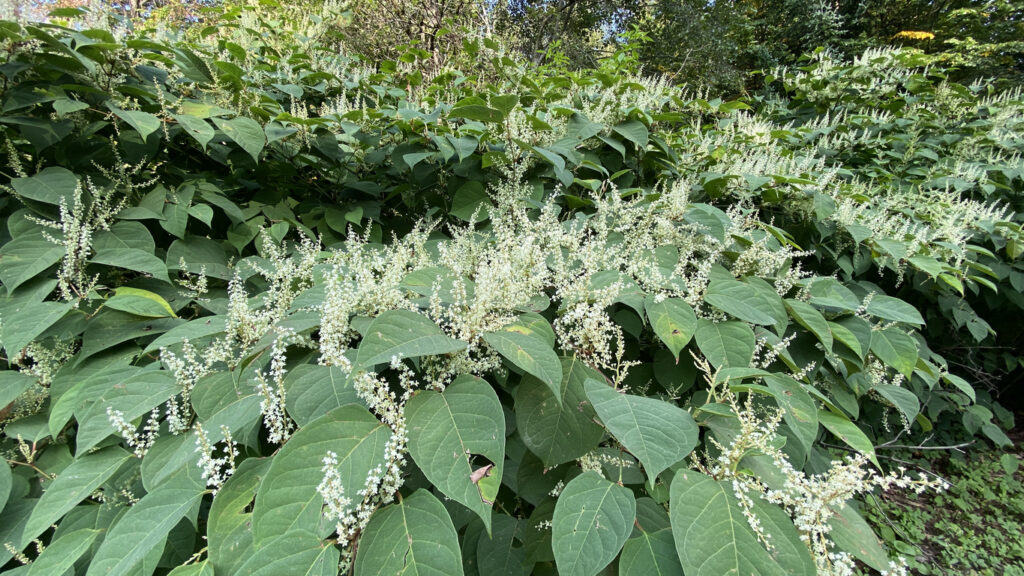4 ways to get rid of Japanese Knotweed
Weeds that refuse to go away can be a real problem for gardeners and landscapers everywhere and Japanese Knotweed definitely falls into this category. Particularly difficult to permanently dispose of this invasive weed can also cause serious legal and financial issues if an infestation occurs on a development site or commercial premises.
Japanese Knotweed or to give it its proper name Fallopia Japonica is a perennial that grows very quickly. Japanese knotweed consists of tall dense stems similar to bamboo that can reach heights of nearly 7 feet. Even though the plant dies back down to ground level during the winter, the onset of spring will see fresh shoots emerging from pink buds. This weed forms thick clumps with heart-shaped or shovel-shaped leaves and purple flecks on the stems.
Luckily, Japanese knotweed is an uncommon, non-native species in the UK. Originally introduced into the UK for its ornamental appeal in the early 1800s, this weed has the ability to sprout from even small areas of rhizomes underground horizontal stems that will grow non stop.
Even though it is relatively rare when it actually occurs it can be extremely problematic. It can be easily spread especially during construction, where soil is being transported or on the soles of shoes or boots. If not treated it spreads rapidly and can have a negative impact on the value of property. To help ensure you can avoid those knotweed nightmares we’ve put together a list of the four best ways to control or completely eradicate Japanese knotweed.

Glyphosate Based Herbicides
If you are looking for something that will effectively kill Japanese knotweed then these herbicides are a good option. To get best results it should either be sprayed on the foliage or injected into the stem. If you want to completely remove the knotweed from your premises it is imperative that it is treated during all stages of growth throughout the year. Just as when using any type of herbicide you need to take into consideration the proximity to water and the general public when using it.
Clearing and Chipping Stems
Because they have thick, sturdy stems, cutting and clearing them is essential if you want to get access to the knotweed and control it. If you want to chip the stems then you must make sure they are dried thoroughly so they cannot spread and grow back. The best time to do this is in winter after the stems have been kiln dried.
Psyllid Insect Control
While the psyllid insect, also called the jumping house louse, does not eliminate Japanese knotweed, it is highly effective in controlling the plant’s growth and preventing its spread. This natural approach is environmentally friendly, with DEFRA initiating a psyllid release program in the spring of 2010.
Disposing of Rhizomes
Even a minor area of rhizome can lead to knotweed starting to sprout. If you fully excavate the rhizome network with heavy plant machinery you can make sure the soil remains clean. This is one of the most efficient ways of eliminating knotweed.
Here at HBB Geosales we can offer a range of Japanese Knotweed & Root barriers are a key component in the battle against invasive weeds and roots.. To get more information on this contact our expert team without delay.